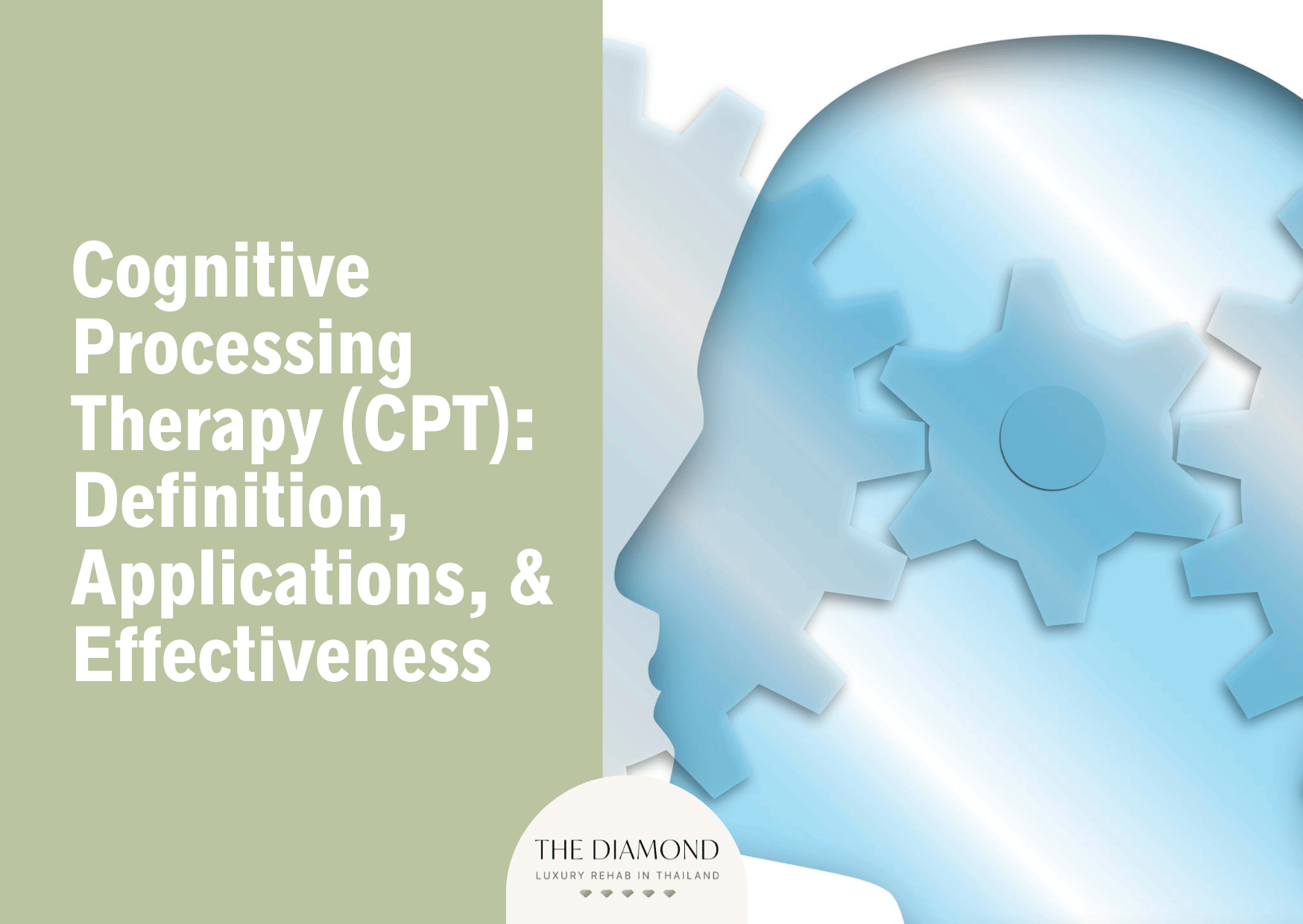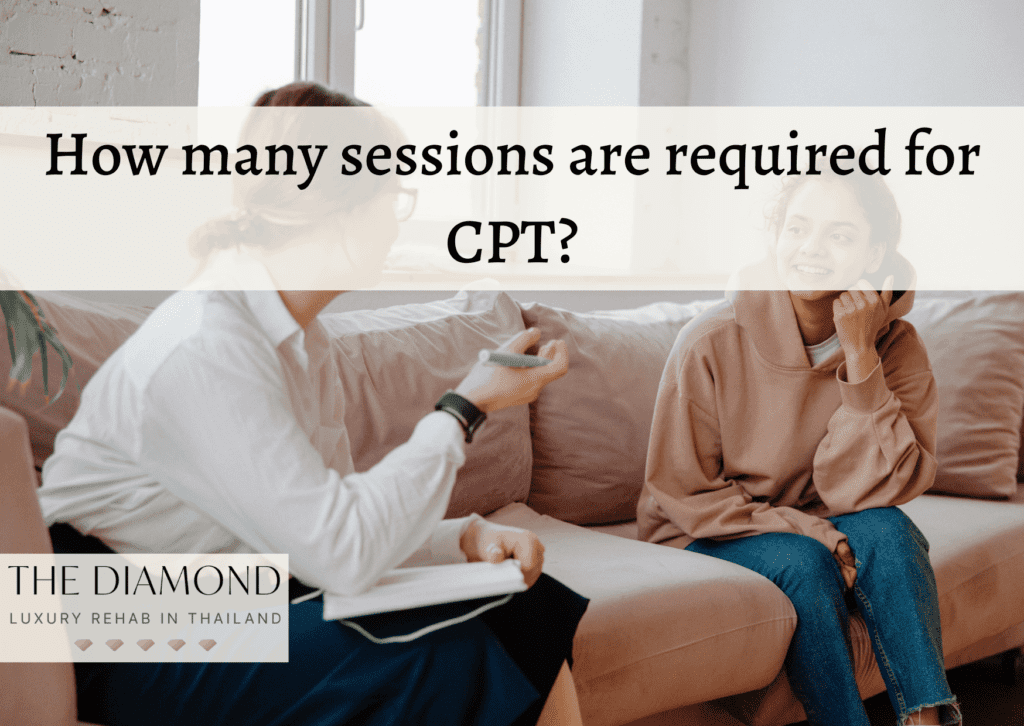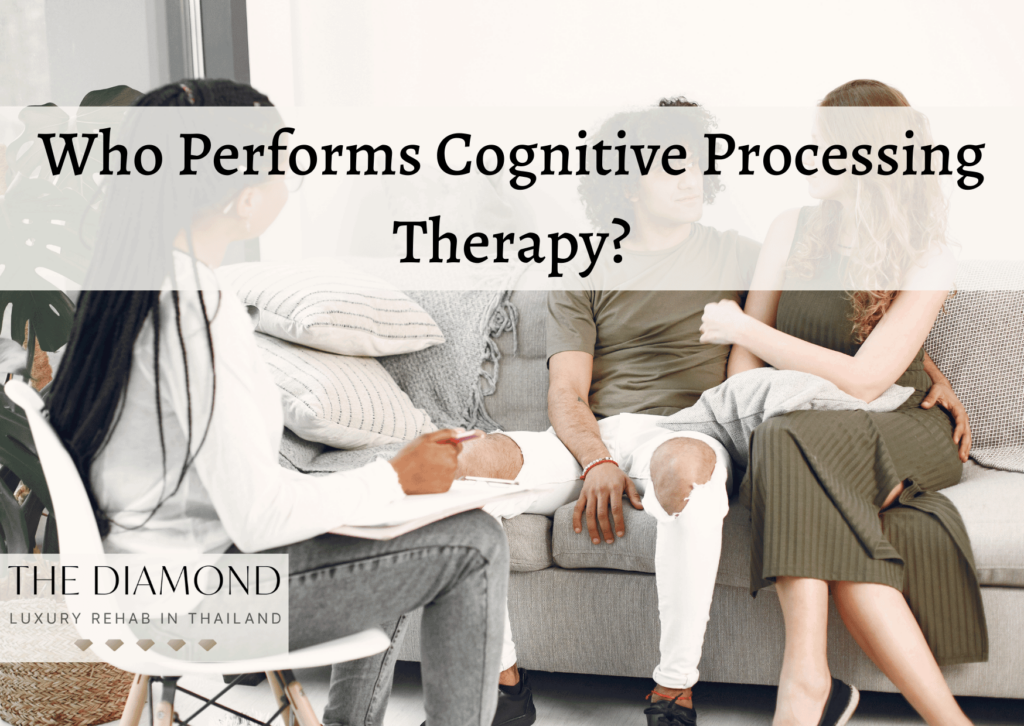Cognitive processing therapy (CPT): definition, applications, and effectiveness
Cognitive processing therapy (CPT) is a type of therapy that mainly treats patients with posttraumatic stress disorder (PTSD). Traumatic events trigger negative thoughts, which lead to negative emotions and behaviors. The main objective of CPT is to act on these negative thoughts and empower a patient to challenge them in order to realize they are inaccurate.
CPT therapy is used in various trauma-related causes, including traumatic events, child abuse, combat, rape, and natural disasters.
A growing body of evidence confirms that CPT is highly effective for the treatment of patients who survived or witnessed trauma. It works through patient education and trauma processing, both of which are crucial for overcoming PTSD.

What is Cognitive processing therapy?
Cognitive processing therapy is a type of psychotherapy specifically designed to treat patients with PTSD and other forms of trauma. The main purpose of CPT is to enable patients to challenge and change their current beliefs about a traumatic event.
This type of cognitive behavioral therapy was developed by Patricia Resick, Ph.D., and fellow psychologists. It was developed in the late 1980s. They initially created CPT to help sexual assault victims who developed PTSD. With CPT for PTSD, patients get the necessary tools to understand their emotions and process the trauma they have survived. Various traumatic events cause PTSD, which is diagnosed when a patient has at least one re-experiencing symptom, a minimum of one avoidance symptom, at least two arousal and reactivity symptoms, and a minimum of two mood- and cognition-related symptoms.
Where is Cognitive processing therapy used?
Cognitive processing therapy is used mainly to treat persons with PTSD i.e., trauma caused by different factors. Common applications of CPT psychotherapy are listed below.
- Traumatic events
- Child abuse
- Combat
- Rape
- Natural disasters
1. Traumatic events
A traumatic event is any event that causes significant distress. Serious accidents and physical or sexual assault, lead to posttraumatic stress disorder. While being afraid is normal, as fear is a natural response; certain people develop severe reactions and symptoms that don’t go away with time. In other words, they develop PTSD.
Having PTSD limits a person’s everyday functioning and impairs their quality of life. Cognitive processing therapy is a useful approach to treating PTSD in people who suffered any type of traumatic event. Here, CPT focuses on a person’s thought pattern in order to allow them to modify their feelings and behaviors. Traumatic events are scary as it is, but they additionally lead to disruptive and irrational thoughts that prevent a person from processing their trauma successfully. CPT puts a strong emphasis on the challenging process of facing trauma and thoughts that torture a patient’s mind.
2. Child abuse
Child abuse refers to any action or inaction that results in actual or potential damage to a child. Abuse manifests in a multitude of ways, encompassing physical, emotional, sexual, and neglectful forms.
Repeated or prolonged child abuse leads to PTSD. Whether a child was physically or sexually abused, they are at a high risk of developing PTSD due to their trauma. As a trauma-focused type of therapy, CPT is the best intervention for victims of child abuse, especially if they have impaired reactions to traumatic events.
During CPT, a child learns more about the normal response to trauma and how to recognize problematic or distressing thoughts and beliefs. The goal of CPT is to help patients face and overcome their trauma instead of avoiding it. Keep in mind avoidance of the subject is a common symptom of PTSD.
3. Combat
Combat is often defined as the experience of engaging in armed conflict or battle while serving in the military. Combat-experienced war veterans deal with a variety of psychological and physical issues as a result of their experiences.
Combat exposure is among the leading causes of PTSD. Soldiers develop PTSD in war zones. Various triggers cause PTSD symptoms, including sounds, sights, smells, and even thoughts that remind a soldier or veteran of the most traumatic event they experienced. Cognitive processing therapy helps persons with combat-related PTSD effectively. The therapy teaches a person to get a deep look into their thoughts in order to challenge them. This is necessary for developing coping mechanisms that help patients overcome this type of PTSD.
4. Rape
Rape is a serious and heinous crime that involves non-consensual sexual intercourse or penetration. It is a form of sexual assault where one person forces or coerces another person to engage in sexual activity against their will. Consent is a crucial element in any sexual activity, and when it is not freely given, informed, and enthusiastic, it constitutes sexual assault.
According to a 2014 study by Möller et al., from PLoS One, rape is the most prevalent traumatic event linked to PTSD in women. Victims of sexual assault struggle to cope with the traumatic event, which leads to shame, embarrassment, disappointment, worthlessness, and guilt. Stigma in society additionally contributes to the worsening of victims’ mental health.
Cognitive processing therapy helps victims of sexual assault overcome their trauma. Through CPT, patients restructure unbalanced thoughts directly associated with trauma they experienced. Women undergoing this type of therapy reduce PTSD symptoms and depression. Repetitive exposure to the traumatic memory, in this case, sexual assault, in a safe environment leads to subsequent changes in the fear structure.
5. Natural disasters
12 sessions are required for CPT, generally speaking. These 12 sessions last around 3 months. The duration of each session is 50 minutes or 60-90 minutes in certain cases.
At times, fewer than 12 sessions are necessary. The number of sessions depends on the progress a patient is making. In fact, a 2020 paper by Held et al., published in the journal Cognitive and Behavioral Practice revealed how studies have indicated that many people do not meet the diagnostic criteria for PTSD before completing the whole twelve-session procedure..
The paper contained a case report which showed that 10 sessions of CPT delivered twice a day over the course of a single week effectively reduces symptoms of depression and PTSD.Again, the standard protocol is 12 sessions and three months, but certain patients experience significant progress sooner. The therapist is the one who recommends the most suitable approach based on the patient’s condition.
How many sessions are required for CPT?

Generally speaking, 12 sessions are required for CPT. These 12 sessions last around 3 months. The duration of each session is 50 minutes or 60-90 minutes in some cases.
Sometimes fewer than 12 sessions are necessary. The number of sessions depends on the progress a patient is making. For example, a paper from Cognitive and Behavioral Practice reported that many patients fall below the diagnostic threshold for PTSD before completing the 12-session protocol. The paper contained a case report which showed that 10 sessions of CPT delivered twice a day over the course of a single week can effectively reduce symptoms of depression and PTSD.
Again, the standard protocol is 12 sessions and three months, but some patients can experience significant progress sooner. The therapist is the one who recommends the most suitable approach based on the patient’s condition.
What are CPT session notes?
CPT session notes are a series of brief videos that contain the key agenda items and interventions for all sessions. The main purpose of 12 CPT session notes is to easily track a patient’s progress. The CPT session notes are listed below.
- Pretreatment considerations
- Session #1: an overview of PTSD and CPT
- Session #2: examining the influence of trauma on the patient
- Session #3: actively working with thoughts, feelings, and events
- Session #4: examining the index trauma
- Session #5: the use of worksheets with challenging questions
- CPT + A phase 3: Sessions 4 & 5
- Session #6: problematic thinking patterns
- Session #7: worksheets with challenging beliefs and introduction to modules
- Sessions #8-11: trauma-related themes
- Session #12: final impact statement and processing intimacy
How does Cognitive processing therapy work?
Cognitive processing therapy works through several mechanisms such as psychoeducation, processing trauma, learning new skills, and changing beliefs. The therapist aims to educate a patient while providing support and counseling.
In order to increase a patient’s knowledge, the therapist first needs to remove barriers to comprehending mental health conditions and develop strategies to motivate patients to participate in their treatment effectively. This is often achieved by teaching patients the reality of having PTSD in order to overcome their stigma and self-blame.
Similar to other types of therapy, CPT is based on the notion that our thoughts influence our feelings. For instance, after a traumatic event, a person’s thought pattern tends to change. The coping mechanism is to blame themselves for that. However, negative thought patterns often lead to feelings of worthlessness and uncertainty.
For that reason, a patient with PTSD changes their thought patterns with cognitive processing therapy. In order to make it happen, they need to challenge assumptions about traumatic events. While a difficult task, it is an effective way of achieving emotional progress and overcoming the effects caused by trauma.
For example, a patient needs to consider why the traumatic event occurred and how it changed their beliefs about themselves and the world around them. Facing these difficult questions allows a patient to identify and tackle their maladaptive beliefs, which only aggravate PTSD symptoms. By resolving these beliefs, patients change their emotional well-being, which positively influences their behavior too. The therapist guides a patient every step of the way. Patients get the opportunity to make some changes in their thinking patterns, which has a significant impact on their feelings and behaviors. Therapists often recommend certain exercises that patients are able to do between sessions.
What happens during Cognitive processing therapy?

During cognitive processing therapy, patients learn to challenge and modify distressing beliefs associated with their trauma. As mentioned above, CPT includes 12 sessions. These 12 sessions, which are performed in individual or group format, are divided into 3 phases.
The 1st phase involves patient assessment, PTSD diagnosis, and a treatment plan. The 2nd phase revolves around consistent education regarding coping with trauma. During this phase, a therapist helps a patient learn and adopt new coping strategies to boost confidence and self-worth.
The 3rd phase is reserved for processing trauma. At this point, therapists help patients identify, react, and overcome negative thought patterns. Patients learn to identify points in trauma that hold them back. Different patients have different points. These include safety concerns, broken trust, or feeling powerless.
During the last sessions, the therapist helps the patient evaluate the progress they’ve made. Therapists work closely with the patient on a relapse prevention plan. With this plan, the CPT program comes to an end.
How effective is Cognitive processing therapy?
Cognitive processing therapy shows significant effectiveness in adults with posttraumatic stress disorder. For example, a 2019 review by Asmundson et al., from the journal Cognitive Behaviour Therapy found that an average CPT participant fared better than 89% of people in the psychological placebo group. What’s more, CPT showed effectiveness in non-PTSD outcome measures. Scientists concluded that CPT offers effective treatment and lasting benefits.
In 2018, Psychological Reports published a paper by Rutt et al., assessing the efficacy of CPT and prolonged exposure in situations comparable to current clinical practice at the Veterans Health Administration.
The study showed that CPT was equally effective with prolonged exposure in decreasing PTSD scores. Compared to veterans who didn’t complete therapy, those who completed therapy experienced better management of their PTSD.
Moreover, a 2018 paper by Watkins et al., from Frontiers in Behavioral Neuroscience examined different psychotherapy interventions in the management of posttraumatic stress disorder. Scientists explained that CPT is highly recommended for the treatment of PTSD because it is trauma-focused.
Cognitive processing therapy proved to be effective for different cases of trauma, including sexual assault survivors, war veterans, and persons with comorbid PTSD and TBI (traumatic brain injury). This type of therapy exhibits a clinically significant reduction in PTSD, anxiety, and depression, with outcomes sustained after five to ten years of follow-up.
According to a 2012 study titled, “Dissemination and experience with cognitive processing therapy” from the Journal of Rehabilitation Research Development, many clinicians trained to provide this type of therapy show good adoption. At the same time, their patients experience significant reductions in PTSD and depression. For that reason, the use of CPT in clinical settings is recommended.
To sum up, a growing body of evidence confirms that cognitive processing therapy is indeed effective in the treatment of PTSD, anxiety, and depression in patients with different trauma cases. It takes three months to complete the treatment.
Who performs Cognitive processing therapy?

A therapist who is licensed and specifically trained performs cognitive-processing therapy. A CPT provider goes through special training to receive certification that allows them to use CPT in treating patients with PTSD. Therapists get a CPT provider status for a period of 3 years.
In order to maintain their status, they need to submit 2 audio or video recordings of therapy sessions for review and meet several criteria. Therapists additionally apply for a quality-rated CPT provider. This license lasts three years and involves further criteria that therapists need to meet, as per the book titled, “Cognitive Processing Therapy for Posttraumatic Stress Disorder: A Comprehensive Manual” originally published in 2016 by Guilford Press. In a nutshell, not every therapist is eligible to provide CPT or cognitive processing therapy. Healthcare providers are able to recommend a good CPT provider to people who need it. Always look for therapists who are trained to perform this kind of therapy.
Is Cognitive processing therapy part of CBT?
Yes, cognitive processing therapy is a part of CBT. In fact, CPT was created specifically as a subtype of cognitive-behavioral therapy to help individuals suffering from PTSD.
A 2016 paper by Tran et al., titled, “Cognitive Processing Therapy for Post-Traumatic Stress Disorder: A Systematic Review and Meta-Analysis” published in the book, “CADTH Health Technology Assessments” from the Canadian Agency for Drugs and Technologies in Health explained that there are various forms of cognitive-behavioral therapy for PTSD, and cognitive processing therapy is one of them.
Since CPT is a form of cognitive-behavioral therapy, it is easy to assume they are essentially the same. However, the major difference between CBT and CPT is the focus. Cognitive-behavioral therapy focuses on identifying harmful negative behaviors, thoughts, and feelings that contribute to mental health problems. Through the replacement of negative or irrational thoughts with positive alternatives, a person reduces symptoms of a mental health problem or adopts healthy coping mechanisms that support positive behaviors. That being said, the main focus of CPT is to identify triggers and thoughts that cause distress.

